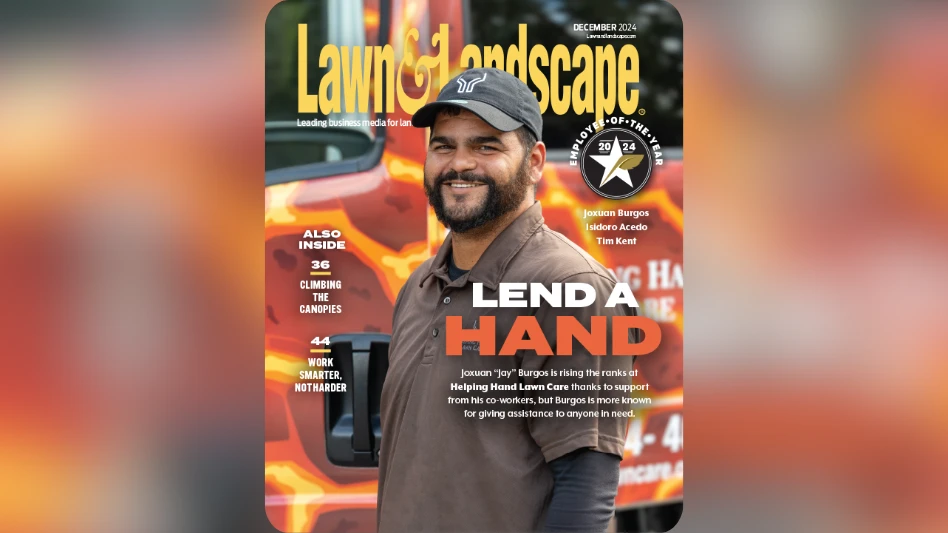As part of the Gardener’s Guild Inc. safety, training and worker’s compensation programs, the San Rafael, Calif.-based company takes great stock in knowing all there is to know about all incidents. Whether it is getting to the bottom of an injury claim or using investigation information to promote safety training, all of the details of an incident are important. This information helps the company in their investigation training, which Mike Davidson, chief financial officer of Gardeners’ Guild, defines as: "Learning what questions you should be asking when an accident occurs."
Working with their loss control representative, Gardeners’ Guild learned that the key to prevention was knowledge. The company discovered that if they could find out the complete reason why an incident happened, they could properly handle it, learn from it and put programs in place to avoid it happening again. This required some important information gathering after an incident.
When investigating an incident, Davidson explained that the company no longer settles for standard answers. Instead, they probe further to find the root of the incident. For example a vehicle accident would obviously include questions about road conditions, speed and visibility. But with the company’s investigation training program, such an incident might also prompt questions such as, "Were you on the radio?", "Were your windows foggy?" or "How much sleep did you get the night before?"
He said the program helps to protect the company against fraudulent claims, but most importantly provides increased communication for prevention of future incidents.
Davidson recalls a stinging incident that definitely could have been avoided with proper communication. At one job site, several workers were victims of bee stings, and according to Davidson, "someone knew about the nest, but the crew never got told." It was not really anyone’s fault that this happened; it was just that the communication channels were not in place to keep everyone aware of the situation. "This was an example of where we learned that the incident could’ve been avoided," he explained. Now as part of the Gardeners’ Guild safety program, any known nests are reported to crews at the beginning of bee season and throughout the season as they appear.
Davidson said that timing was a key to getting investigations completed properly and efficiently. "Theoretically, a manager should stop what they’re doing and go to find out the problem. The manager should try to get the forms filled out within 24 hours to be reviewed," he explained. This quick action and some follow up investigating helps the company get a clear picture on what happened in the incident. Then the company is fully prepared to handle the claim and work on prevention strategies.
Through its loss control representative, Davidson said the company has developed forms that facilitate information gathering and proper handling of incidents. These forms are designed to get all of the basic details of an incident and probe further into the not so obvious details. Follow up of the information contained in the forms often results in learning more about the incident and finding topics to add to the company’s safety program. The following sample form details some of the information and questions that are included in incident report forms from Gardener’s Guild.
The author is Internet Editor of Lawn & Landscape Online.
|
INCIDENT REPORT FORM |
|||||
|
Date of Incident |
Time of Incident |
||||
|
Type of Incident: |
Vehicle |
Property Damage |
Injury to Others |
Other |
|
|
EMPLOYEE INFORMATION |
|||||
|
Employee: |
Employee #: |
||||
|
Employee Date of Birth: |
Supervisor: |
||||
|
DETAILS OF INCIDENT |
|||||
|
Location of Incident (include city, street names, etc.): |
|||||
|
Description of Incident (describe all events leading up to, during and after incident, including direction, speed, location, weather/road conditions, etc.; use diagrams if necessary):
|
|||||
|
Was a police report filled out? – If yes, name city and report number: |
|||||
|
YOUR COMPANY VEHICLE INFORMATION (IF APPLICABLE) |
|||||
|
Vehicle #: |
Vehicle Vin #: |
||||
|
Vehicle License #: |
Vehicle Make: |
||||
|
Vehicle Model: |
Vehicle Year: |
||||
|
Passengers: yes/no – If yes, provide names:
|
|||||
|
OTHER PARTY INFORMATION (IF APPLICABLE) |
|||||
|
Name: |
Company Name: |
||||
|
Address: |
Phone Number(s): |
||||
|
Drivers License #: |
Insurance Company and Policy #: |
||||
|
Vehicle Make: |
Vehicle Model: |
||||
|
Vehicle Year: |
Vehicle Color: |
||||
|
Vehicle License #: |
|||||
|
Owner Name (if different): |
|||||
|
Owners Address: |
Owners Phone Number(s): |
||||
|
Passengers: yes/no – If yes, provide names:
|
|||||
|
WITNESSES OR OTHER PARTIES (IF APPLICABLE) |
|||||
|
List witnesses or other involved parties, including names, addresses and phone numbers and any written statements)
|
|||||
|
DAMAGE ASSESSMENT (DESCRIBE IN DETAIL) |
|||||
|
Your Company:
|
|||||
|
Other Party(ies):
|
|||||
|
INJURIES (IF APPLICABLE) |
|||||
|
List persons(s) injured and fully describe, including any treatment received for: |
|||||
|
Your Company:
|
|||||
|
Other Party(ies):
|
|||||
|
COULD INCIDENT HAVE BEEN AVOIDED? |
|||||
|
Describe how incident could have been avoided and make recommendations to prevent it in the future:
|
|||||
|
ACKNOWLEDGEMENT |
|||||
|
Signatures of employee(s) and supervisor(s): |
|||||

Explore the February 2000 Issue
Check out more from this issue and find your next story to read.
Latest from Lawn & Landscape
- Senske acquires 2 Nutri-Lawn franchise operations in Canada
- Our Holiday Lighting Contest rolls on
- LawnPro Partners acquires Ohio's Meehan’s Lawn Service
- Landscape Workshop acquires 2 companies in Florida
- How to use ChatGPT to enhance daily operations
- NCNLA names Oskey as executive vice president
- Wise and willing
- Case provides Metallica's James Hetfield his specially designed CTL





